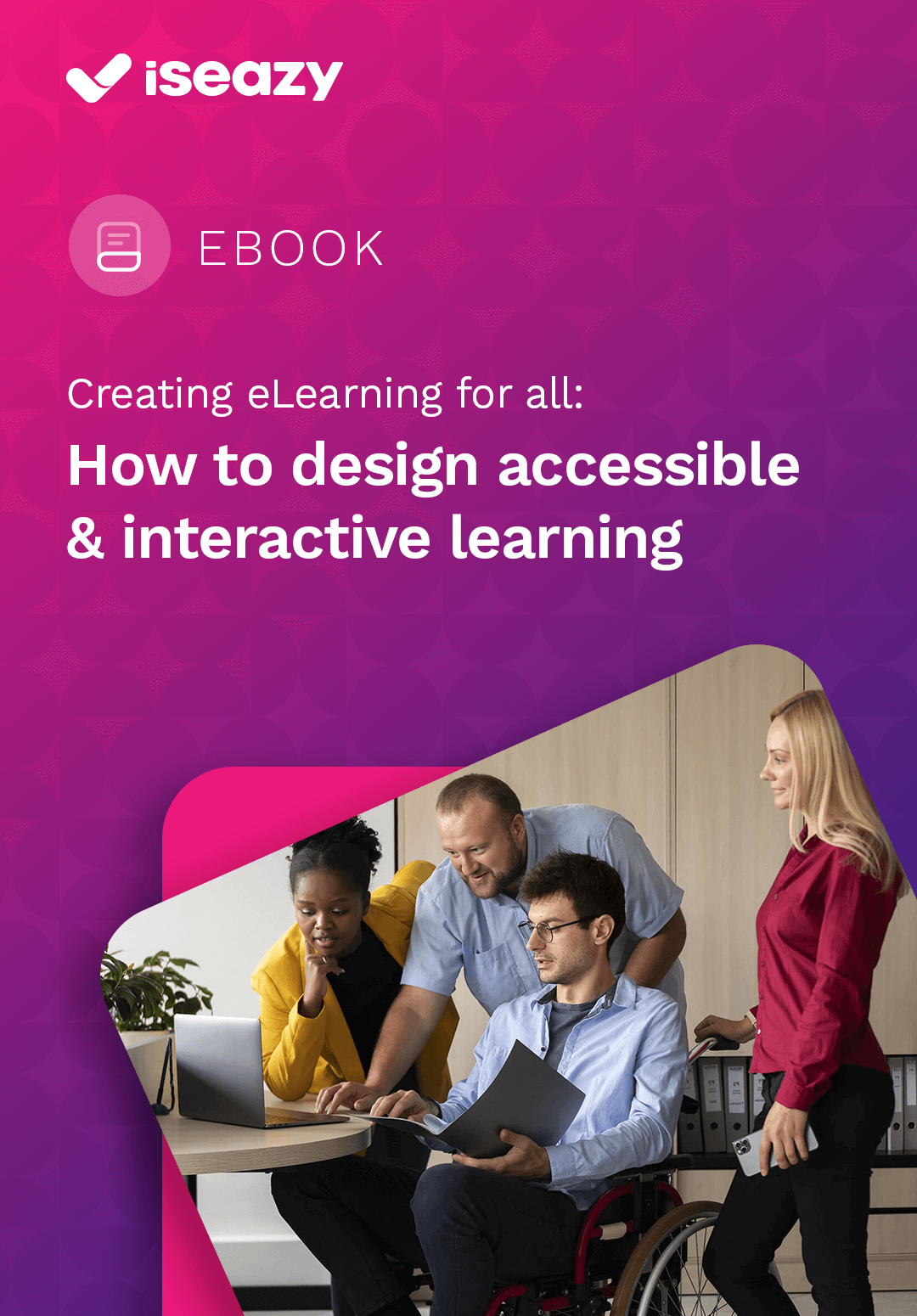How To Pick An Authoring Tool For Accessible Interactive Learning
Authoring tools have become essential pieces of software for Instructional Designers and trainers to speed up eLearning content creation. The importance of this software has grown in recent years as, both in the education sector and in companies, online training has become crucial to meet the needs of an increasingly digital society.
However, not all authoring tools work in the same way. While some of them require extensive programming, coding, and design knowledge, others allow you to create courses using more agile and intuitive processes. The same is true when creating accessible eLearning content. Only a few of the tools currently available on the market allow you to develop courses that meet accessibility criteria.
For this reason, below are a series of must-have considerations that you should take into account when choosing your eLearning authoring software.

5 Key Considerations When Selecting Your Next Authoring Tool
1. Your Authoring Tool Should Be Easy To Use
Do you lack previous experience in creating eLearning courses? Does your team lack advanced knowledge of design and programming? Do you want to be more agile when developing your online training programs? If the answer to any of these questions is yes, it is best to choose a simple and intuitive eLearning authoring software with a low learning curve. You should also look for one that includes elements which can help you optimize the content creation process, such as predefined style templates, simple layouts arranged by slides, and preconfigured multimedia and interactive resources.
In addition, when it comes to creating accessible courses, it is essential that the eLearning authoring software you use allows content to be easily converted, and that it offers automation and tips that guide the content creator and simplify the editing process.
2. Your Authoring Tool Must Comply With Accessibility Standards
One of the main drawbacks that organizations face when creating accessible eLearning courses is the complexity of applying the accessibility criteria set out in the most widespread international standards: the Web Content Accessibility Guidelines (WCAG) and Section 508 of the US Workforce Rehabilitation Act.
In fact, most of the authoring tools currently on the market only allow you to comply with a few very basic guidelines, such as including alternative text in images, or subtitles and transcriptions in multimedia elements.
Considering the importance of accessibility in establishing a fair and inclusive training plan, it is important that you choose an eLearning authoring software capable of creating truly accessible content. In other words, a tool audited by expert accessibility consultants and/or by official bodies.
3. Your Authoring Tool Should Allow You To Customize Content
For most companies, it is essential that their eLearning courses remain true to their brand image. Therefore, one of the first things to look for in an authoring tool is that it offers you the possibility to personalize your content. The variety of style, color and font templates included must be diverse. You should also be able to create custom templates made specifically for your company.
A plus is the ability to easily manage the colors you use within a project. In fact, there are currently some tools that allow you to change the color of all your slides with just a couple of clicks.
A problem, however, arises when creating accessible courses, since the use of color, fonts, and contrast will be quite limited. For this reason, your authoring tool must be able to quickly and easily create two learning experiences: one with all the original resources, colors, and fonts you require; and a second that complies with accessibility standards. Keep in mind that this shouldn't imply an extra cost or a huge increase in production times.
4. Your Authoring Tool Must Permit You To Create Interactive Learning Programs
If you want to create truly accessible training that offers the best learning experience, one thing you cannot sacrifice is interactivity. Elements such as games, exercises, videos and interactive infographics have been shown to enhance employee motivation and, therefore, generate better training results.
Although, to a certain extent, most eLearning authoring software on the market offer the possibility of including these resources, they do not always provide a varied catalog. In addition, if we also need the resources to be accessible, the options open to us are further reduced. In most cases, eLearning content creators are forced to manually adapt these types of resources or, in the worst case, to do without them. To avoid this, look for an authoring tool that offers you preconfigured and ready-to-use interactives and games, both with and without accessibility.
5. Your Authoring Tool Must Allow You To Create Content That Can Be Accessed From Any Device
Your eLearning courses won't be truly accessible if they don't allow students to use assistive technologies like keyboard navigation or screen readers. However, you can't forget about responsiveness either.
When choosing an authoring tool, it must be capable of creating content that automatically adapts to any type of interface or device, without simultaneously breaching accessibility criteria.
6. Your Authoring Tool Must Optimize Production Times And Costs
As we have already seen, if you don't want to double the costs and production times of your content, you need to find a tool that allows you to easily convert your courses into accessible versions.
With this in mind, there are currently authoring tools on the market that include a dual mode. These allow you, with a simple click of a button, to automatically generate an accessible version of an existing course. The content creator will only have to make a few additional changes, such as including headers, alternative text, subtitles or closed captions. In the same vein, automation and editing tips will also allow you to greatly reduce the time it takes to create the accessible version of your eLearning courses.
Conclusion
Beyond accessibility, productivity features are also necessary to speed up eLearning course creation times. Collaborative editing, for example, is a must for accelerating the creation process. Other functions, such as automatic saving or restore points, will ensure that you never lose information or progress relevant to the project.
In addition, the most modern eLearning authoring software makes use of Artificial Intelligence to incorporate automatic translations and voiceovers.
Download the eBook Creating eLearning For All: How To Design Accessible And Interactive Learning today to discover how to design accessible learning experiences that are engaging, personalized, and memorable for every member of your team. You can also join the webinar to overcome the most common accessible eLearning obstacles.










